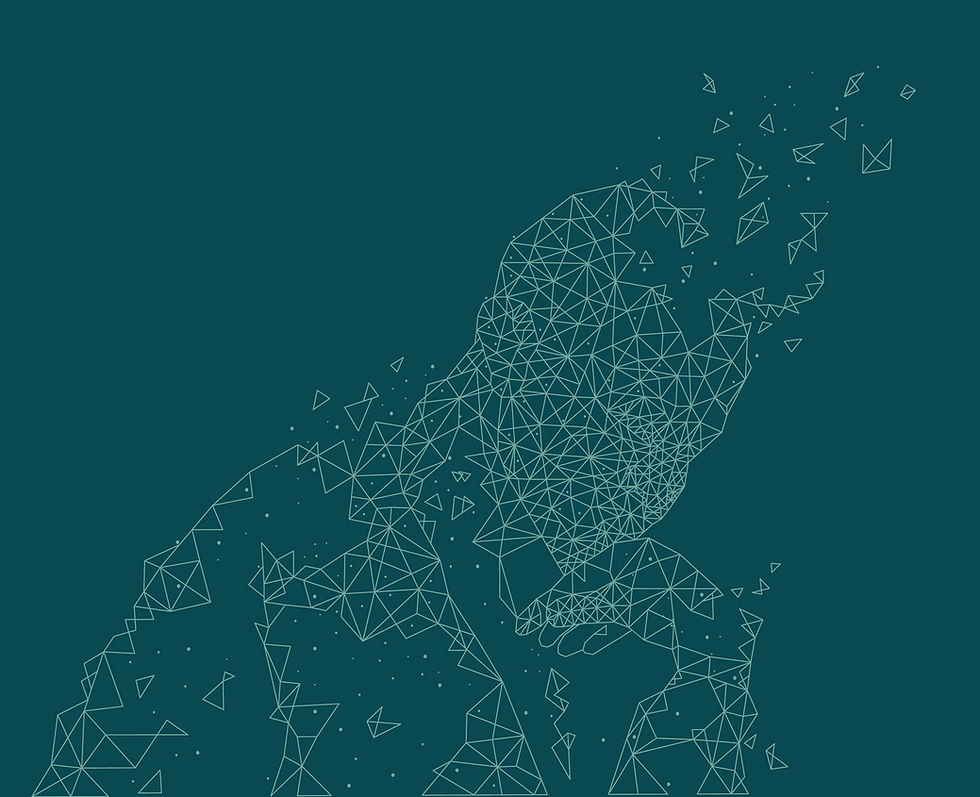Working from the Inside Out and Why it’s Critical Facilitating Learning
- bernard chanliau
- Dec 4, 2019
- 4 min read
Updated: Nov 20

Are your client’s old patterns preventing them from innovating or growing?
As coaches, we get assessed by our stakeholders on how we create awareness and manage progress and accountability within the learning agenda of our clients. Coaching from the Inside Out (vertical learning) using tools from the integral leadership and developmental psychology movements facilitate this learning.
“Knowing your own darkness is the best method for dealing with the darkness’s of other people” C. Jung, 1973
When I started executive coaching 13 years ago, I coached predominantly around tactical leadership assisting high potentials to learn how to do something better, such as micro leadership skills, behaviours, structures and processes at the individual or collective levels—all exterior, tangible, quantitative, concrete outside-in thinking KPIs. As my work evolved I dipped into the mental models and meaning making framework of my clients’ through developmental and transformational coaching, which is more centred on longer term developments at the end of the coaching continuum.
However, great change leadership must start on the inside, and I always knew that “change starts with self” or that an executive must “first manage himself before managing others.” What I had not realised was that this does not mean changing yourself, but accessing one’s highest and most conscious self.
This paradigm shift of working from the inside-out as oppose to the outside-in is well documented and researched, and most self-help books, spiritual or religious cosmologies prone philosophies around the concept of self-actualization.
Recently through my lived experience of coaching senior executives of Fortune 500s and founders of “scale-ups” (startups scaling at hyper growth speed), I noticed a pattern of coaching around executive presence, inner-flow, mindfulness, true-Self, higher-Self and their defence mechanism counterparts, such as conscious ego self and shadow aspects, competing commitments, engrained beliefs…etc. Most of my ambitious, competitive C-suite clients clearly exceed their competency expectations on all levels, and they understand that their next board level transition requires enabling “Level II learning (Argyris & Schon)” around their inner state qualities in order to lead in today’s uncertain, disruptive and increasingly uncontrollable world. As professor Ronald Heifetz has repeatedly stated, “The most common error organizations make is to try and solve adaptive challenges with technical means.”

In any event, we can only coach from the same or greater level of consciousness as our clients. Their level of conscious awareness has to be greater than the current operating consciousness that shapes their organization as adaptive challenges require the invention of new knowledge, the creation of new thinking capacities to accomplish change and innovation.
As my coaching practice evolved, working strategically in the stratospheres of organizations, I began to realise the importance of the journey of perfecting the authentic personality supporting my clients—Becoming Self. After all, leadership is about death and shedding one’s ego—”There is no birth of consciousness without pain” (Jung 1954).
It involves coaching our clients’ thought patterns, emotions and bodies to free themselves from the fears, inhibitions, conditioned behaviours, reactive emotions, critical judgements and limiting beliefs that prevent them from achieving business and personal goals, and I always joke with my clients by asking how big is your life onion?
My own journey to individuation using learning channels such as transpersonal psychology, supervision and psycho-spiritual science through shamanism, and its Andean cosmology has led me towards Transpersonal Development—Being Self—re-connecting with, knowing and ultimately realizing one’s true-Self and obviously being mirrored in parallel with my clients.
To the same extent Personal and Transpersonal development overlap and integrate as much as Horizontal and Vertical Learning, we need both to achieve the learning results our clients are expecting from us. The real transformational coaching is to understand the consciousness of our client, the underlying beliefs and assumptions that impact decisions and behaviours—how to make the unconscious conscious and integrate the learning? From my perspective, the vertical integration is the most difficult in adult leaning.
Investing in enhancing their leadership competencies at a micro level is important but not enough in today’s VUCA world.

Image courtesy of Barrett C. Brown, Ph.D.
As coaches, we have many tools from the integral leadership and developmental psychology movements to help and support our clients working from the inside-out; the subjective levels of vertical learning in order to raise their level of developmental consciousness – their internal state of being.
My favourites are authors like K. Wilber (mapping a client’s or system AQAL constellation—check out ICF blog Team Coaching); Kegan & Lahey (understanding each client’s immune system that is blocking implementation.); C. Jung and Transpersonal Psychology (working with guided imagery; experiential art and dreams by owning our own shadow aspects as it will always come back to us—mirrored—through other people,); Otto Scharmer (Theory U and its social fields of change or consciousness especially at the collective level); and Bill Joiner (leadership “agility stages” that are rooted in well-documented stages of personal development.).
What are your favourite sensory tools/authors in the vertical learning, integral leadership fields?
This article was first published on the ICF (International Coach Federation) blog 22nd August 2017: http://bit.ly/2veTrhB



Comments